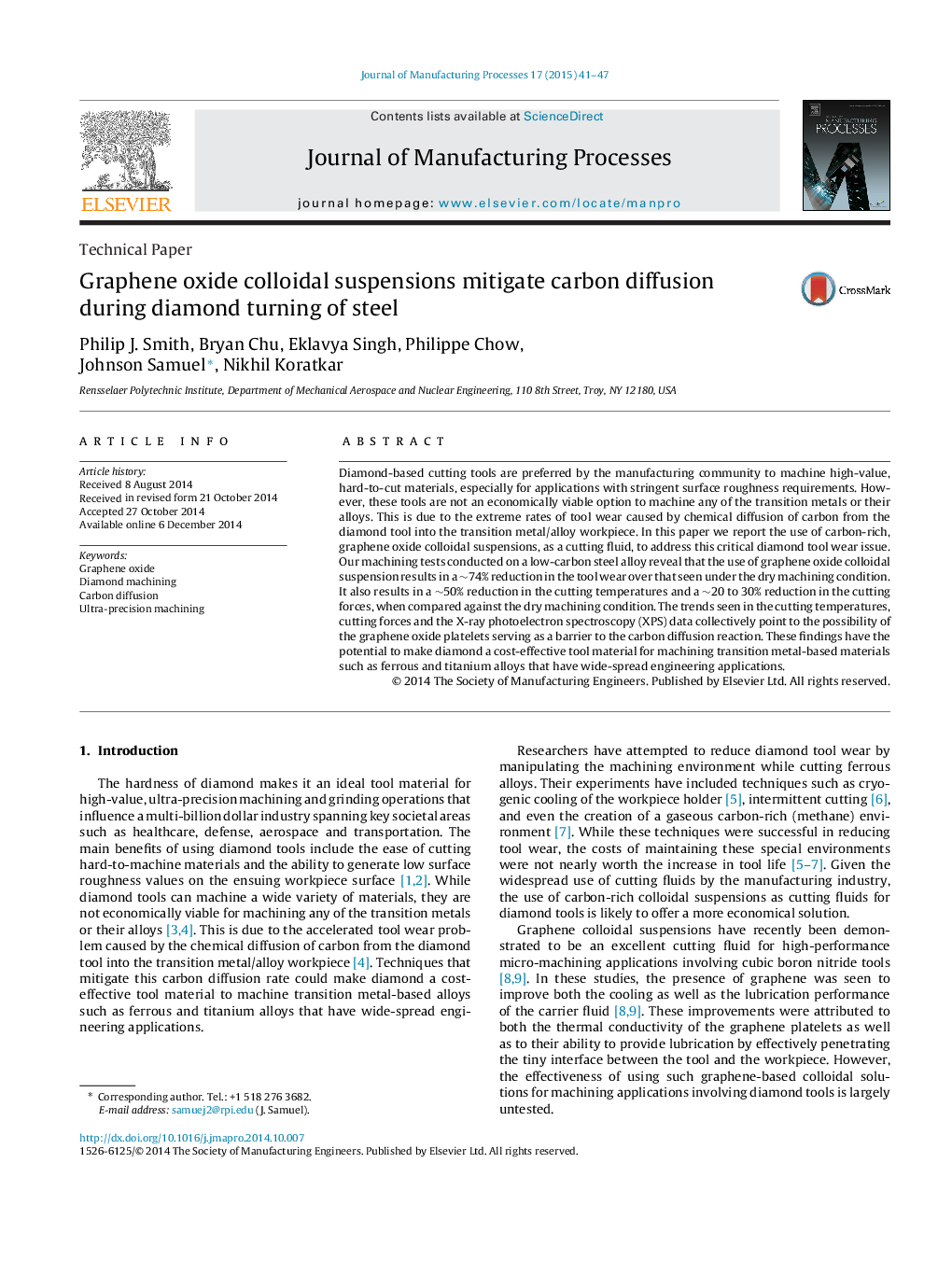| Article ID | Journal | Published Year | Pages | File Type |
|---|---|---|---|---|
| 1696995 | Journal of Manufacturing Processes | 2015 | 7 Pages |
Diamond-based cutting tools are preferred by the manufacturing community to machine high-value, hard-to-cut materials, especially for applications with stringent surface roughness requirements. However, these tools are not an economically viable option to machine any of the transition metals or their alloys. This is due to the extreme rates of tool wear caused by chemical diffusion of carbon from the diamond tool into the transition metal/alloy workpiece. In this paper we report the use of carbon-rich, graphene oxide colloidal suspensions, as a cutting fluid, to address this critical diamond tool wear issue. Our machining tests conducted on a low-carbon steel alloy reveal that the use of graphene oxide colloidal suspension results in a ∼74% reduction in the tool wear over that seen under the dry machining condition. It also results in a ∼50% reduction in the cutting temperatures and a ∼20 to 30% reduction in the cutting forces, when compared against the dry machining condition. The trends seen in the cutting temperatures, cutting forces and the X-ray photoelectron spectroscopy (XPS) data collectively point to the possibility of the graphene oxide platelets serving as a barrier to the carbon diffusion reaction. These findings have the potential to make diamond a cost-effective tool material for machining transition metal-based materials such as ferrous and titanium alloys that have wide-spread engineering applications.
